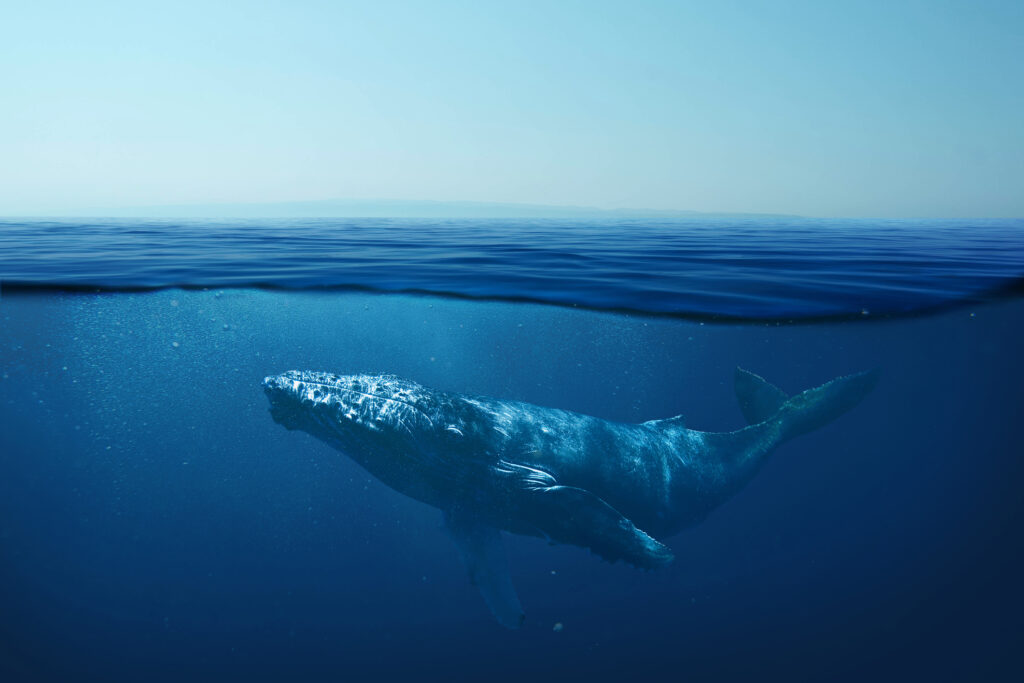The Bureau of Ocean Energy Management and the NOAA Fisheries agency have both put out what amount to “arguments from ignorance” claiming that offshore wind development has nothing to do with the recent whale deaths. “We know nothing about it so it must not be happening” is a ridiculous defense to the charge of offshore wind development causing the death of a lot of whales. But this is exactly what the Feds are now saying.
NOAA Fisheries is a scientific agency and their version is more scientific, which is important because this is really a scientific issue. Let us look at their arguments. They have a fairly long FAQ page on wind and whales here: https://www.fisheries.noaa.gov/new-england-mid-atlantic/marine-life-distress/frequent-questions-offshore-wind-and-whales
Here is their core argument: “At this point, there is no evidence to support speculation that noise resulting from wind development-related site characterization surveys could potentially cause mortality of whales. There are no specific links between recent large whale mortalities and currently ongoing surveys for offshore wind development.”
These two sentences present different aspects of the argument. Let’s take the second sentence first.
The concept of “specific links” is pretty vague. It has a narrow meaning that BOEM has asserted, namely sonar blasting killing whales on the spot. There is indeed no evidence that this has ever happened. This is not like land based wind, where you can count the dead eagles on the ground around the tower.
Instead, likely causes of death are indirect and death may occur relatively far away in space and time. These causes range from injury, such as bleeding and deafness, to fleeing or avoidance or other behavioral changes.
But ask this question about possible injury: “How many whales have been examined for injury after being sonar blasted?” The answer is none, because there is no way to examine wild whales for bleeding or deafness. Thus the fact that we know of no instances of injury in no way means there are no such injuries. Injury might actually be common.
There are however some very specific links between mortality and sonar survey blasting in the broader sense. First of all, the East Coast humpback whale mortality rate roughly tripled beginning in 2016, which is just when offshore wind surveying really geared up. I discuss this in my article here: https://www.cfact.org/2023/01/23/evidence-says-offshore-wind-development-is-killing-lots-of-whales/.
The recent humpback deaths look to be part of this long term trend. The NOAA FAQ suggests that this huge 2016 jump in mortality might be due to a big increase in humpback numbers. This conjecture is falsified by the fact that the dramatic die-off of the severely endangered North Atlantic Right Whales (NARW) also started in 2016.
Given no other apparent cause, the ongoing sonar blasting surveys are the likely link between offshore wind development and ongoing elevated whale mortality. Thus sentence two is false. There is a likely link.
Sentence one says there is no evidence that survey noise could potentially cause mortality. It is amusing that this claim is falsified by NOAA’s own activity. Since 2016 they have issued over 40 authorizations for survey noise to harass large numbers of whales. One authorization I looked at permitted harassment of over 100 right whales, whose entire population is estimated at just 340 critters.
Harassment is defined as potentially inducing a change in behavior and these changes can potentially cause mortality. Thus NOAA Fisheries has emphatically certified the potential for survey noise to cause mortality.
I first pointed out a simple case last year in an article titled “How to kill whales with offshore wind”. See https://www.cfact.org/2022/09/27/how-to-kill-whales-with-offshore-wind/ (which I sent to a lot of people at NOAH Fisheries).
The article is about operational noise but site survey noise is just as bad, perhaps much worse. The wind site described is in a low traffic area, as most likely are, with heavy coastal traffic passing nearby. To avoid the horrendous noise, the migrating whales are forced to go around the site, which puts them right into heavy traffic.
The potential for increased deaths is obvious, making sentence one deeply false.
In fact there seems to be a huge gap in the science being done at NOAH Fisheries. On one hand they do a lot on underwater acoustics, that is noise, in order to do these Harassment Authorizations.
As I understand it they first estimate the size and location of the area where the noise level will be above the safe level. Then they use a density model to estimate the number of critters that will be adversely affected and the authorization number is derived from that. This is in effect a forecast of the potential, forced behavior changes.
On the other hand they also do a lot of what is called “population dynamics”. This means looking at what it takes to sustain or grow a given critter population, be it whales, other marine mammals, various monitored fish species, or even sea turtles.
For example they recently lowered the allowed human kill rate for NARW from 0.9 kills per year to 0.7, reflecting the steadily declining population. This means we can safely cause the deaths of no more than 7 whales every 10 years. Killing 2 whales every 3 years also meets this standard as the average is 0.67 whales a year. NOAA estimates we are presently killing well over 2 NARW per year.
What NOAA Fisheries does not seem to be doing is looking at the potential adverse impact of the authorized wind site harassments on the monitored populations, especially whales. Instead they now seem to be claiming that there are no such potential impacts, which is clearly false.
It is precisely this kind of adverse population impact that needs to be assessed before any more Harassment Authorizations are issued by NOAH Fisheries.
What harassment driven behavior changes are to be expected? How might they lead to deaths, such as by injury, infection, ship collision or fishing gear entanglements, etc? In some cases, especially the NARW’s shrinking population, adverse impacts on fertility might also be important.
The basic scientific question is very simple: “What is the potential death rate from proposed authorized harassment?” Authorizing harassment of whales and other protected animals should be suspended until this question is answered.
First published at CFACT.





